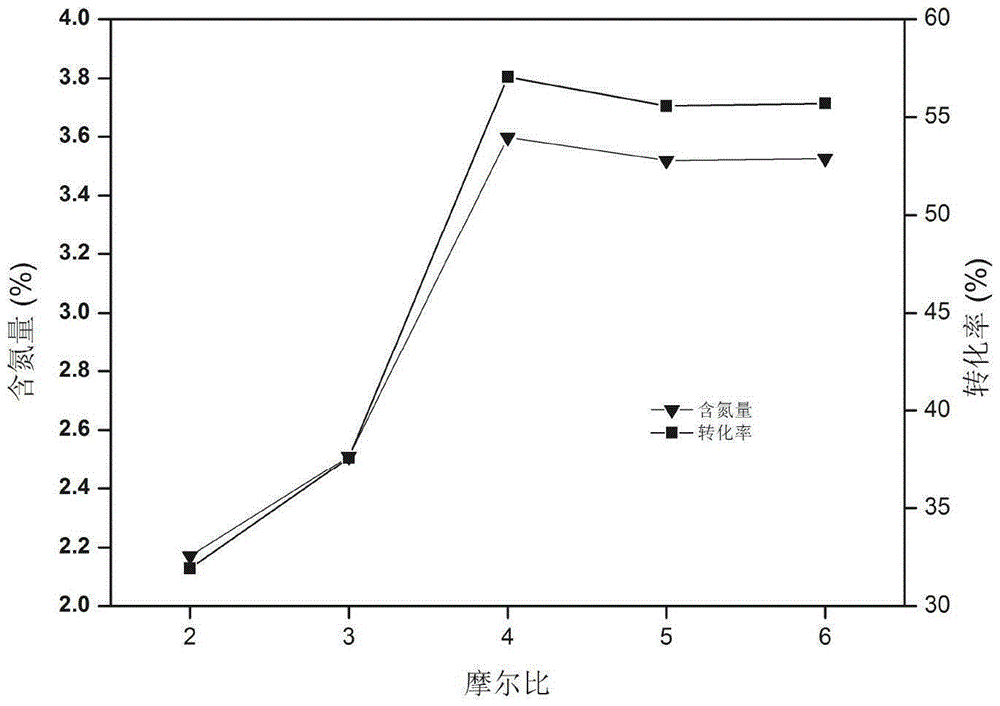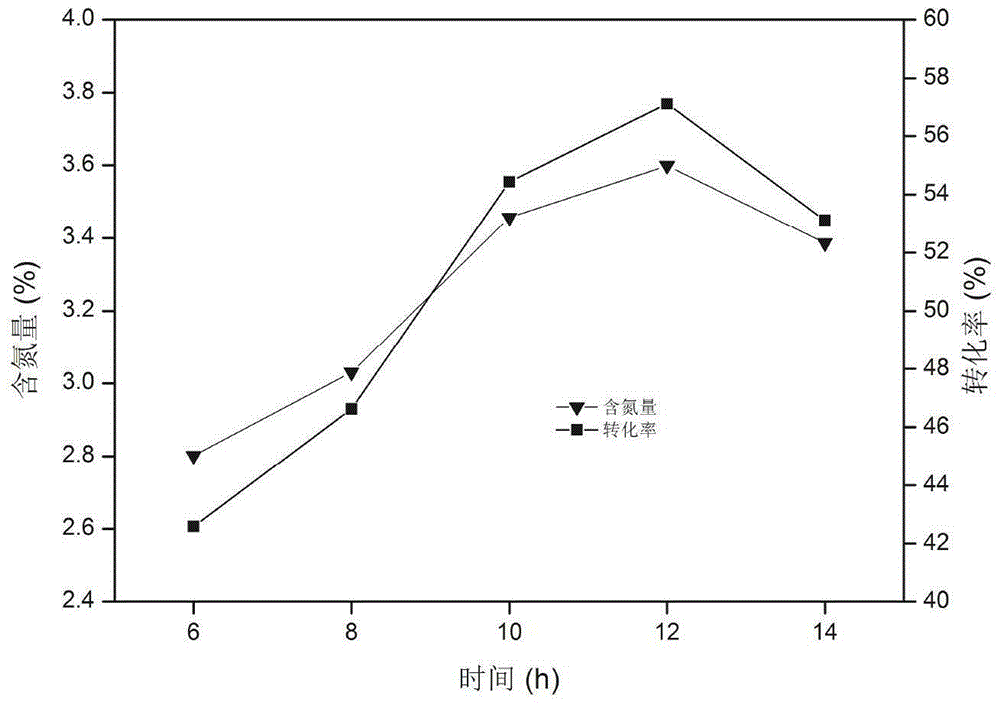Method of preventing and controlling chromium pollution in dark green glass production and used chelate fiber
A chelating fiber, dark green technology, applied in water pollutants, chemical instruments and methods, adsorption water/sewage treatment, etc., can solve the problem of reducing the reuse efficiency of chelating resins, cumbersome multi-stage extraction process, and expensive extraction agents to achieve excellent regeneration performance, high adsorption selectivity, and short adsorption equilibrium time
- Summary
- Abstract
- Description
- Claims
- Application Information
AI Technical Summary
Problems solved by technology
Method used
Image
Examples
Embodiment 1
[0043] Embodiment 1, a kind of method of synthetic chelating fiber NTHF, carry out following steps successively:
[0044] 1) Put about 20.0mg of the matrix---grafted acrylic polytetrafluoroethylene fiber (PTFE-g-AA) into a 100mL three-necked bottle, add 50mL of N,N-dimethylformamide and soak for 12 hours;
[0045] Remarks: The content of PTFE-g-AA functional group (ie -COOH) in grafted acrylic polytetrafluoroethylene fiber (PTFE-g-AA) is 3.07mmol / g.
[0046] 2), then add 0.246mmol of ligand——nicotinic acid hydrazide (that is, the reaction molar ratio of PTFE-g-AA and ligand is 1:4) to the three-necked flask, stir and react at 35°C for 12 hours, stir The speed of the machine is 300rpm / min.
[0047] 3), filter the product obtained in step 2), and wash the obtained filter cake with N,N-dimethylformamide, ether, ethanol, and deionized water three times in sequence, each time: N,N-dimethyl The amount of formamide, ether, ethanol, and deionized water is 100ml;
[0048] Put the wa...
PUM
| Property | Measurement | Unit |
|---|---|---|
| adsorption capacity | aaaaa | aaaaa |
| adsorption capacity | aaaaa | aaaaa |
| adsorption capacity | aaaaa | aaaaa |
Abstract
Description
Claims
Application Information
 Login to View More
Login to View More - R&D
- Intellectual Property
- Life Sciences
- Materials
- Tech Scout
- Unparalleled Data Quality
- Higher Quality Content
- 60% Fewer Hallucinations
Browse by: Latest US Patents, China's latest patents, Technical Efficacy Thesaurus, Application Domain, Technology Topic, Popular Technical Reports.
© 2025 PatSnap. All rights reserved.Legal|Privacy policy|Modern Slavery Act Transparency Statement|Sitemap|About US| Contact US: help@patsnap.com



